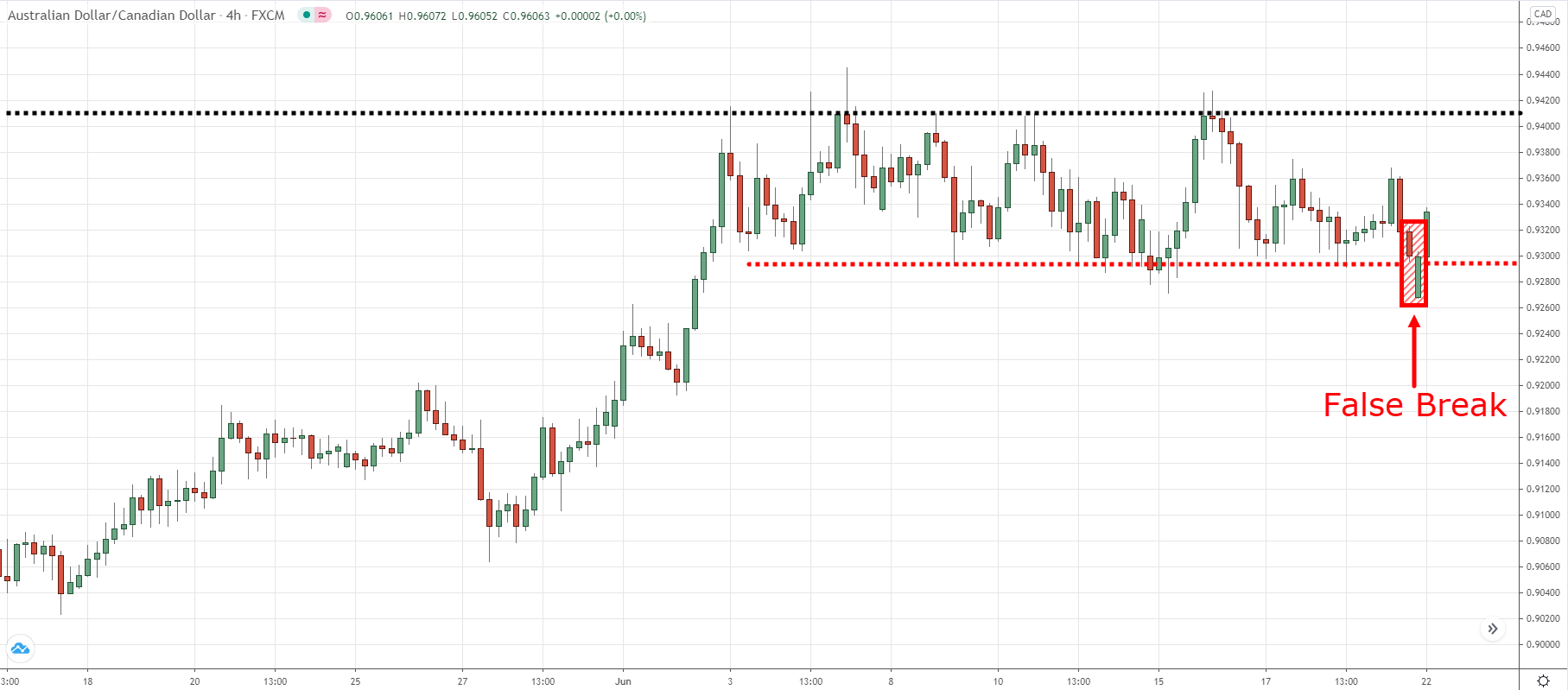#5: Higher timeframe market structure
At this point:
We’ve covered your trading setup which includes your entry and stop loss.
Next, let’s talk about the higher timeframe market structure.
Why?
Because it gives you an idea to whether you should hold your winners longer, or just capture one swing in the markets.
Trading against the higher timeframe trend
Let’s say you went short on the 4-hour timeframe and you’re sitting on profits.
However, on the daily timeframe, the market is in an uptrend.
So, what should you do?
- Hold onto your short trade with the hopes the market continues in your favour
- Exit your short trade at the nearest swing low as the market might reverse against you
Now, there’s no right or wrong here.
But for me, I’d want to exit my trade at the nearest swing low as the market could reverse higher and continue its uptrend (on the daily timeframe).
Now, let’s flip the scenario around…
Trading in the direction of the higher timeframe trend
Let’s say you went long on the 4-hour timeframe and the market quickly moves in your favour.
At the same time, the daily timeframe is also in an uptrend.
So, what do you do?
- Hold your long trade with the hopes the market continues in your favour
- Exit your trade at the nearest swing high as the market might reverse against you
In this case, I’d want to continue holding my long trade as the higher timeframe is also working in my favour.
Now when I say “continue holding”, I don’t mean buy and hold forever. Instead, it’s to trail my stop loss so I could ride the trend if the market continues in my direction.
Low volatility on the higher timeframe
Here’s the thing:
The market moves in volatility cycle—from a low period of volatility to high volatility, and vice versa.
This means if the market is in a low volatility environment, it’s a sign the market is about to make a big move (and you want to be prepared for it).
Here’s an example…
Let’s say you went long on the 4-hour timeframe and the market quickly moves in your favour.
Also, you noticed the daily timeframe has formed a buildup, a low volatility price pattern which looks like a “squeeze”.
So, what do you do?
- Hold your trade with the hopes that if volatility expands, it does so in your favour
- Exit your trade at the nearest swing high as the market might reverse against you
- I don’t know
For me, I’d hold my trade because there’s a huge profit potential if volatility expands in my favour.
Here’s an example of a price action trading system based on this…
AUD/CAD buildup on the daily timeframe:
AUD/CAD false break on the 4-hour timeframe:

As you can see…
There’s a false break setup on the 4-hour timeframe, after which, the price moved in your favour.
At this point, you might want to take profits at the nearest swing high as potential selling pressure could be lurking there—which I agree.
Still, looking at the daily timeframe, you’d realize the market has formed a buildup (as volatility has contracted)—which is a sign a big move could occur soon.
So, how do you balance between the two?
For me, I’d like to take 50% of my profits at the nearest swing high. So, if the market does reverse from it, at least I’ve got something in the bank.
Next, I’d hold the remaining of my position and see if the price could break out of the swing high. If it does, I will ride the trend until my trailing stop loss is hit.
Conclusion
So here’s what you’ve learned:
- Market structure tells you what to do—whether to buy, sell, or stay out of the markets
- Area of value helps you determine where to buy or sell (things like support & resistance, moving average, etc.)
- Entry trigger tells you when exactly to buy or sell using a specific price pattern (things like price rejection, candlestick patterns, etc.)
- Your stop loss should be at a level where if reached will invalidate your trading setup (or when your area of value is “destroyed”)
- The higher timeframe trend helps you decide whether to capture a swing or ride a trend. Look to capture a swing if you’re against it, and ride a trend if you’re with it
- If the higher timeframe is in a low volatility environment, then hold a portion of your position as you could catch a big move if volatility expands in your favour
Now here’s what I’d like to know…
What are some of the things you look for as a price action trader?
Leave a comment below and share your thoughts with me.


